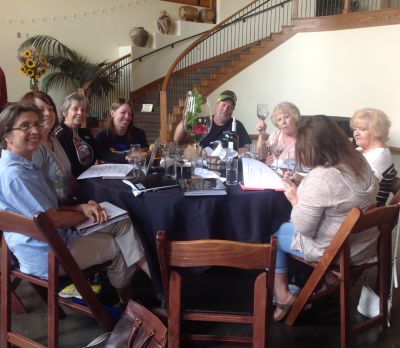Many Italian Americans are becoming interested in discovering more about their Italian roots, but they may have been overlooking a place that can help them with their journey - social media. On Facebook, the number of Italian American genealogy groups is growing day by day. Unlike the traditional genealogy websites like Ancestry.com or FamilySearch.org, Facebook provides members an opportunity to connect more closely with others who share a passion for Italian immigrant history or Italian American culture. So how can you use Facebook in your search for your roots? In this article, we will look at three ways.
Translation
Reading a hand-written Italian document is hard, even if you know some rudimental Italian. I have turned to my Facebook groups for help in translating documents that have left me puzzled for years. One day, I posted a photograph of the back of a postcard that I had inherited written in the local dialect of my ancestors. Within minutes, I had an overwhelming response from the group members and a translation that helped me learn about the writer and her connection to my family.
Finding Lost Relatives
Three years ago, while reading posts in the group “Italian Genealogy,” I discovered a post by a member living in Colorado. She was asking if anyone was familiar with a village called Carovilli. I immediately responded to her post and explained that my family was from nearby Castiglione, a smaller village situated right next to Carovilli in the province of Molise. We exchanged email addresses via private messaging and I shared with her my research about Castiglione and Carovilli. I noticed her maiden name was James, which is an Americanized version of DiGiacomo, a surname I had seen in my own family tree. My new friend was still learning about her family line, so we did not find a common ancestor in our “paper family tree.” One day, a few months later, I was on Ancesty.com reviewing my latest DNA matches and, much to my surprise, my Facebook friend was showing up as a 4th-6th cousin! If it had not been for Facebook, I would not have recognized her name. This past July, we had a chance to meet face to face in Colorado along with several other “DNA cousins” and finally tracked down at least one set of our common ancestors, Matteo DiFrancia (born in 1778) and Tecla Rossi (born in 1779) from Castiglione!
In 2015, I visited Pietrabbondante, Italy, another village in Molise, where my paternal grandfather, Antonio Torella, was born. Before my trip, I joined the Pietrabbondante Facebook group and posted in Italian (thank goodness for online translation services) a message that I would be coming to Pietrabbondante and would like to find any “Torella” family members. Within a few days, the administrator of the group who lived in Pietrabbondante put me in touch with two other Torellas. When I arrived in Rome, I had the chance to enjoy a pizza lunch with two of my newly found Italian Torellas. We are still trying to find our ancestral connection, but I am confident that we are related as Pietrabbondante is a small town of 600 inhabitants and the Torella surname is not extremely common.
Advice and collaboration
In my opinion, the best use of Facebook, by far, is the advice and collaboration aspects. After meeting several others who were researching my ancestral Italian village, I created a private Facebook group dedicated to collaborating on research for our village. In this group, we post questions and findings about our ancestors and have been very successful in filling in gaps in our family trees and making ancestral connections with one another. Our group is private and one of the group administrators must approve membership to ensure that the information we share is secure. We also post vintage photographs that have unknown faces in them and have been able to help one another identify those whose names have been lost for decades. You do not have to have a private group to get results. I have also posted questions on the other Italian genealogy groups and have found many members willing to share their advice thereby helping me break down brick walls or find new places to look for evidence.
Finally, if you know your family’s ancestral village, look for its Facebook group or page. Even if you do not find that long-lost cousin, you will likely see photographs of your homeland’s spectacular landscape that can help you to imagine the streets where your ancestors once walked.
Italian Genealogy Groups and Pages on Facebook to check out:
Italian Genealogy
Italian Heraldry and Genealogy
John D. Calandra
Italian American Institute
Southern Italian Genealogy Network
Northern Italian Genealogy
Italy Gen
(Italian Surnames – Italian Genealogy)



